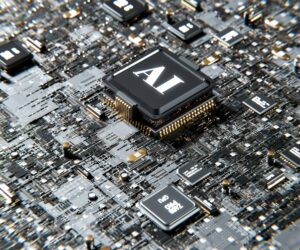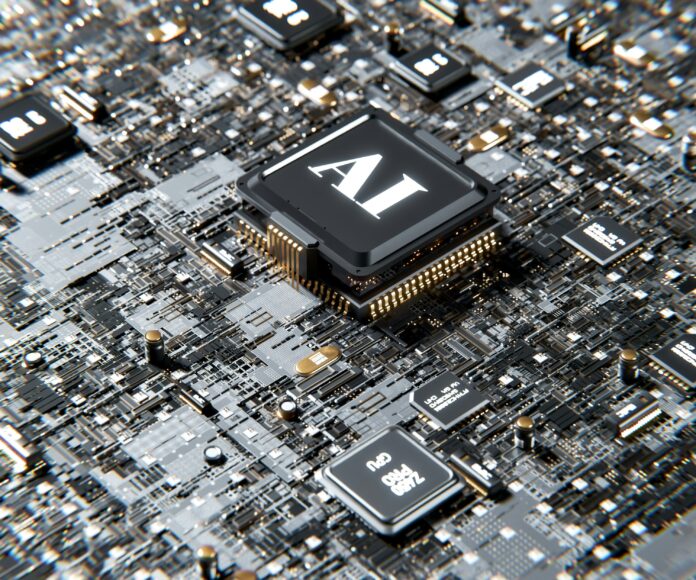As the world faces mounting environmental challenges, from climate change to resource depletion, one of the most promising solutions lies in the integration of artificial intelligence (AI) into sustainable development efforts. AI’s ability to process vast amounts of data, optimize systems, and predict future trends has opened up new avenues for tackling environmental issues. Whether it’s addressing energy efficiency, waste management, or protecting biodiversity, AI is playing an increasingly significant role in shaping a sustainable future.
1. AI in Renewable Energy: Boosting Efficiency and Reducing Emissions
One of the most impactful ways AI is contributing to sustainability is through the enhancement of renewable energy systems. AI algorithms are being used to predict energy demand more accurately and optimize the performance of renewable sources like solar and wind energy. By analyzing weather patterns and energy consumption trends, AI can help utilities manage supply and demand more efficiently, reducing reliance on fossil fuels and lowering carbon emissions.
- AI for Solar Power: AI-driven systems can predict solar power generation based on weather forecasts, ensuring that solar panels operate at their highest efficiency. Companies like Google have pioneered efforts to integrate AI into renewable energy, using AI to optimize the use of solar energy on their data centers, significantly reducing their carbon footprint.
- AI for Wind Energy: In the wind sector, AI can improve turbine performance by predicting and adjusting to wind patterns. This helps to maximize energy output and reduces operational downtime, making wind power more reliable and cost-effective.
2. AI for Sustainable Agriculture: Feeding the World Without Depleting Resources
With a growing global population and the increased demand for food, sustainable agriculture is crucial for the future of both food security and the environment. AI is driving significant innovations in farming practices that are not only improving crop yields but also conserving water, reducing pesticide use, and enhancing soil health.
- Precision Farming: AI-powered sensors and drones allow farmers to monitor crops and soil conditions in real time, ensuring that resources are used efficiently. For example, AI algorithms can analyze soil moisture levels and predict irrigation needs, preventing water waste while maintaining optimal crop growth.
- Pest Control and Disease Prevention: By using machine learning models, farmers can detect early signs of crop diseases and pest infestations, minimizing the need for chemical pesticides. This reduces environmental pollution and helps protect biodiversity by preventing the overuse of harmful chemicals.
3. AI for Climate Change Mitigation and Adaptation
AI’s capabilities extend beyond immediate problem-solving to long-term climate change mitigation and adaptation strategies. By analyzing massive datasets on weather patterns, greenhouse gas emissions, and environmental changes, AI can predict future climate scenarios and offer insights into how to reduce the impact of global warming.
- Climate Modeling: AI models are now being used to create more accurate and granular climate predictions, which can guide decision-making for governments and businesses. These models help identify the regions most vulnerable to climate change and inform disaster preparedness strategies.
- Carbon Capture and Storage: AI is also playing a role in optimizing carbon capture technologies. By improving the efficiency of systems that capture CO2 emissions from industrial processes, AI could help in significantly reducing the amount of greenhouse gases released into the atmosphere.
4. AI in Circular Economy: Reducing Waste Through Automation
A key component of sustainability is reducing waste, and AI is helping to drive the circular economy, where products are reused, recycled, or refurbished rather than disposed of. AI is transforming industries such as waste management, recycling, and product design.
- AI for Waste Sorting: AI-powered robots are being used in recycling plants to automatically sort materials like plastics, metals, and paper, increasing the speed and accuracy of recycling. This leads to higher recycling rates and reduced landfill waste.
- Optimizing Supply Chains: AI is also helping companies reduce waste by optimizing supply chains. AI can forecast demand with precision, allowing companies to minimize overproduction and reduce the waste associated with unsold goods.
5. The Ethical Considerations of AI in Sustainability
As AI’s role in sustainable development grows, it is essential to consider the ethical implications of these technologies. While AI holds great promise, there are concerns about the potential for job displacement, inequality, and privacy violations. To ensure that AI is used ethically in sustainability efforts, it’s important to establish guidelines that prioritize social and environmental responsibility.
- Ensuring Equitable Access: AI-driven solutions must be accessible to all countries, especially those in the developing world, to avoid widening the technological divide. Initiatives like the UN’s AI for Good program aim to ensure that AI technologies are used to benefit all of humanity.
- Balancing Automation and Employment: As AI automates industries such as agriculture and energy, there is a risk of displacing workers. It’s crucial to invest in reskilling programs and policies that help workers transition into new roles in green technologies and AI development.
6. The Future: AI and a Sustainable Planet
The potential of AI to drive environmental change is vast, but it requires collaboration among governments, businesses, and researchers to realize its full potential. The path forward will involve continuous innovation in AI technologies, as well as a commitment to ethical practices and sustainability. As AI becomes more integrated into daily life, it will undoubtedly play a pivotal role in shaping a more sustainable, resilient, and equitable world.
By harnessing the power of AI to tackle environmental challenges, we have the opportunity to create a future where both humanity and the planet thrive together.

Photo by Igor Omilaev on Unsplash
Views: 7






